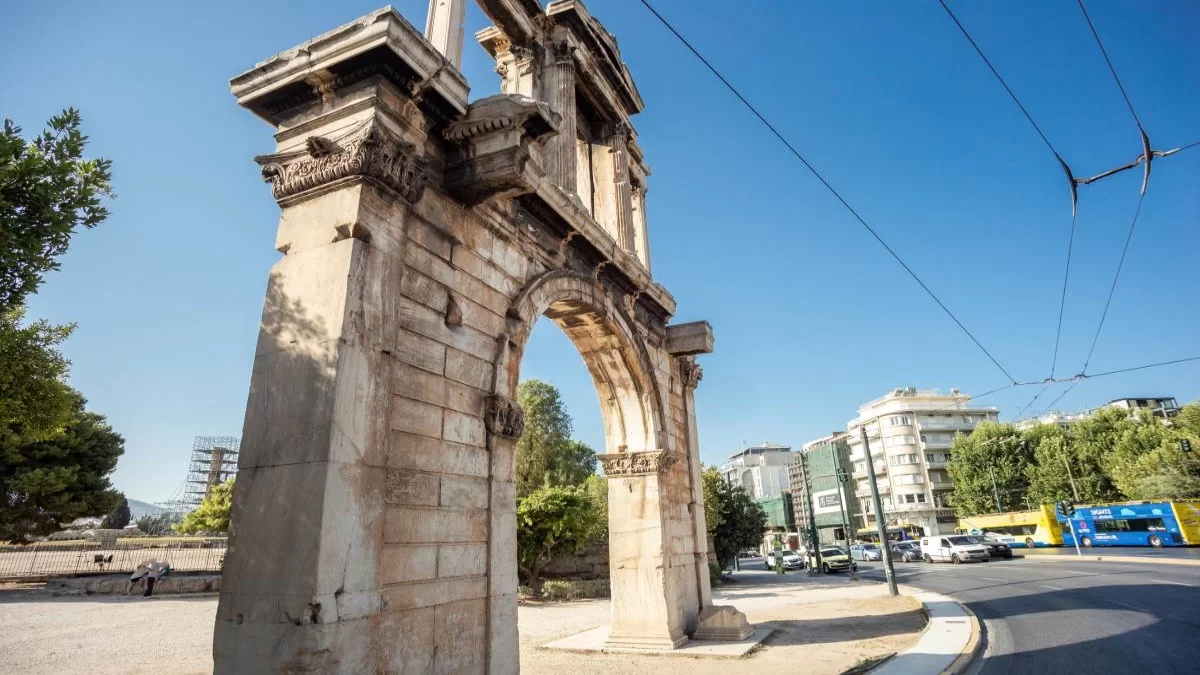Next to Amalias Avenue, about 500 metres from Syntagma Square, is the site of the Olympiaeum, with the magnificent temple of Olympian Zeus and the much-photographed Hadrian’s Gate. The Columns of Olympian Zeus are the ruins of the temple of Olympian Zeus, which was the largest temple of antiquity and one of the largest in the ancient world in general, dedicated to Zeus, the King of the Gods.
At the Temple, the cult dates back to prehistoric times. The temple in honour of Zeus was begun in the 6th century BC by the tyrant Pisistratus, but was left unfinished due to the fall of tyranny. It was completed much later, namely 6.5 centuries later (124-125 AD), in the reign of the Roman emperor Hadrian – who identified himself with Zeus – and was one of the largest of his time.
Of the 104 Corinthian columns, only 15 survive today, but even from these we can get an idea of the once imposing character of the building. Unfortunately, nothing has survived of the large statue of Zeus that stood inside the temple. Other important buildings had been erected on the same site, and there were also elaborate statues, but very little has been found in the excavations. Within a very short distance away is the Hadrian’s Gate, on Amalias Avenue. The Gate – a triumphal arch – was erected by the Athenians in 131-132 AD, as a sign of gratitude to Hadrian for the works he had bestowed on the city.
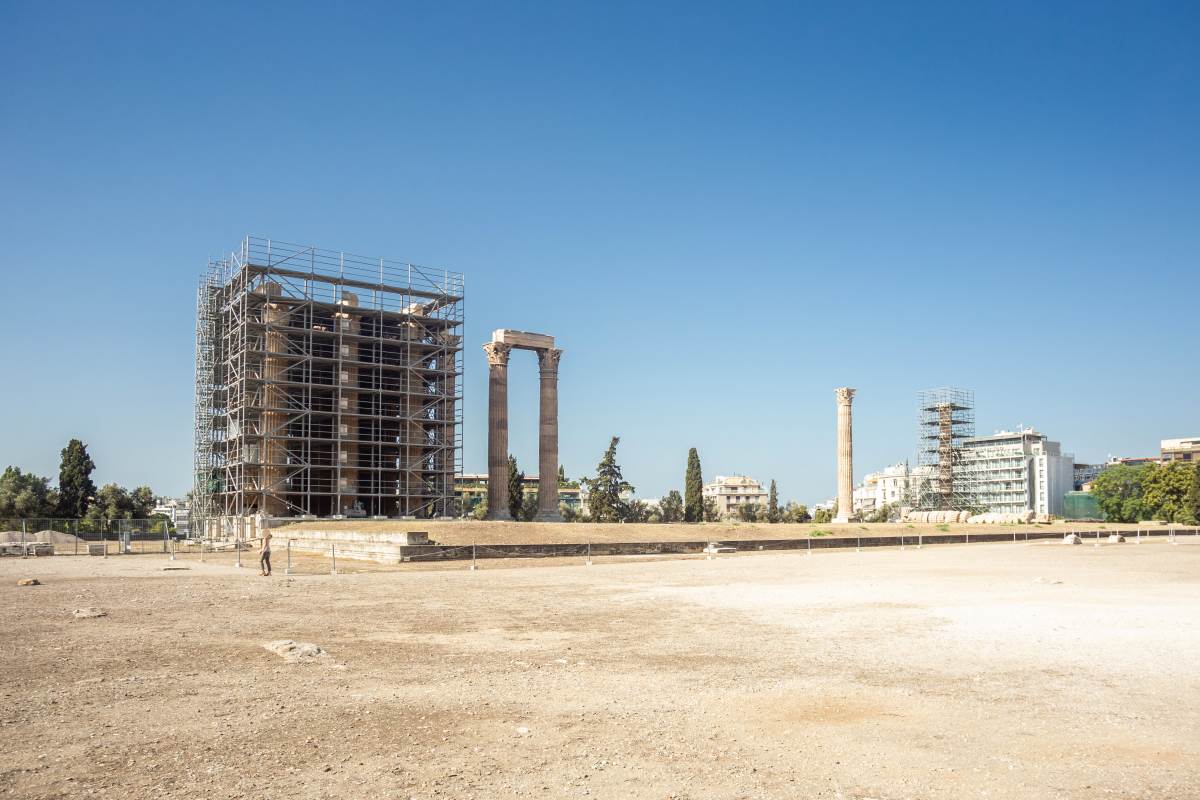
The history
The Sanctuary of Olympian Zeus, is one of the most important and oldest sanctuaries of Athens and was founded, according to the tradition preserved by the wanderer Pausanias, by Deucalion, general of the Greeks, in honour of Zeus in exchange for his salvation after the flood.
The construction of the great temple, begun by Pisistratus the Younger in 515 BC, on the site of an older temple of the early 6th century, reached the crypt and was interrupted, as we mentioned, with the fall of tyranny. The Late Archaic temple was a Porean, Doric style, colossal in size. Some of its building materials were later used for the construction of the eastern arm of the Themistoclean wall.
The building of the temple was continued by the King of Syria Antiochus IV Epiphanes, with the Roman architect Cossutius, in 175 BC, in the same dimensions and proportions as the archaic one but in marble, in Corinthian style, later by Augustus and finally completed by the Philhellene Emperor Hadrian, who inaugurated it in 131-132 AD.
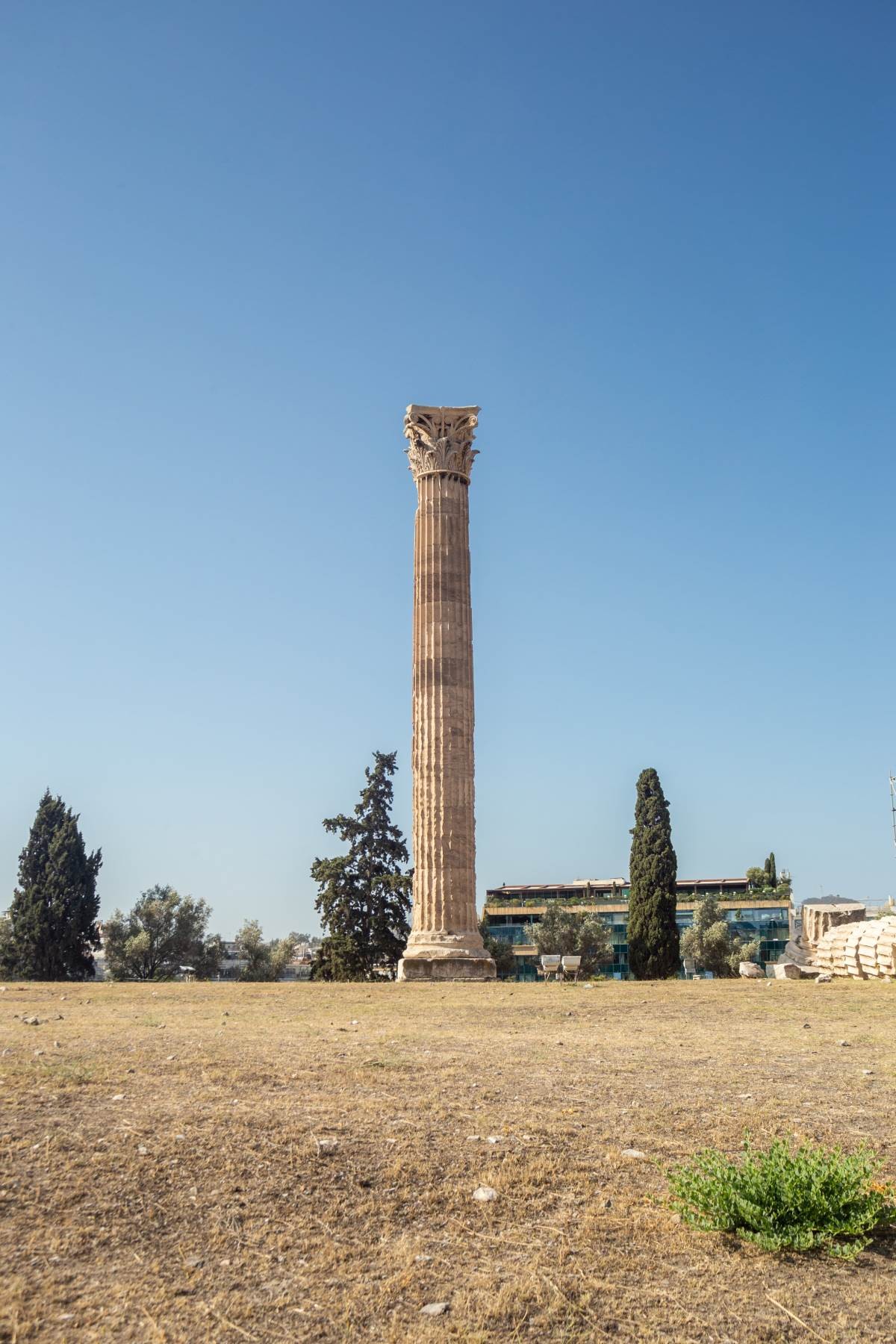
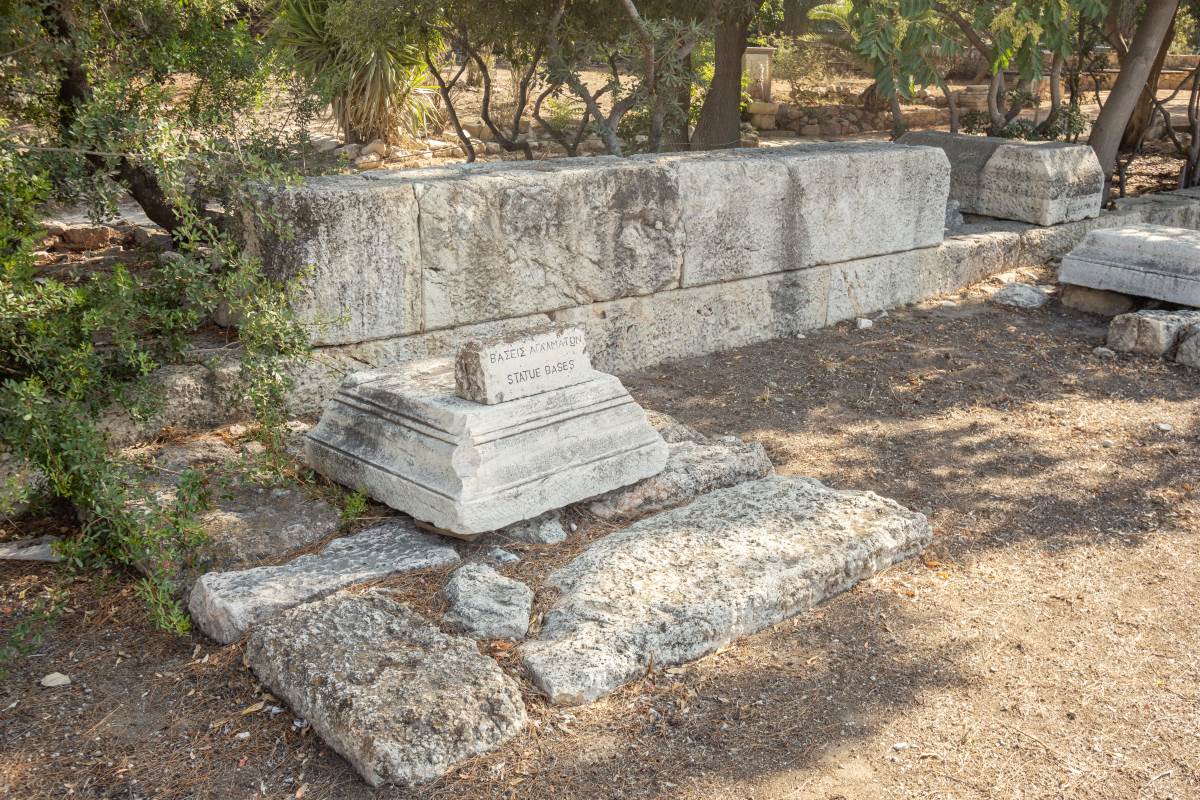
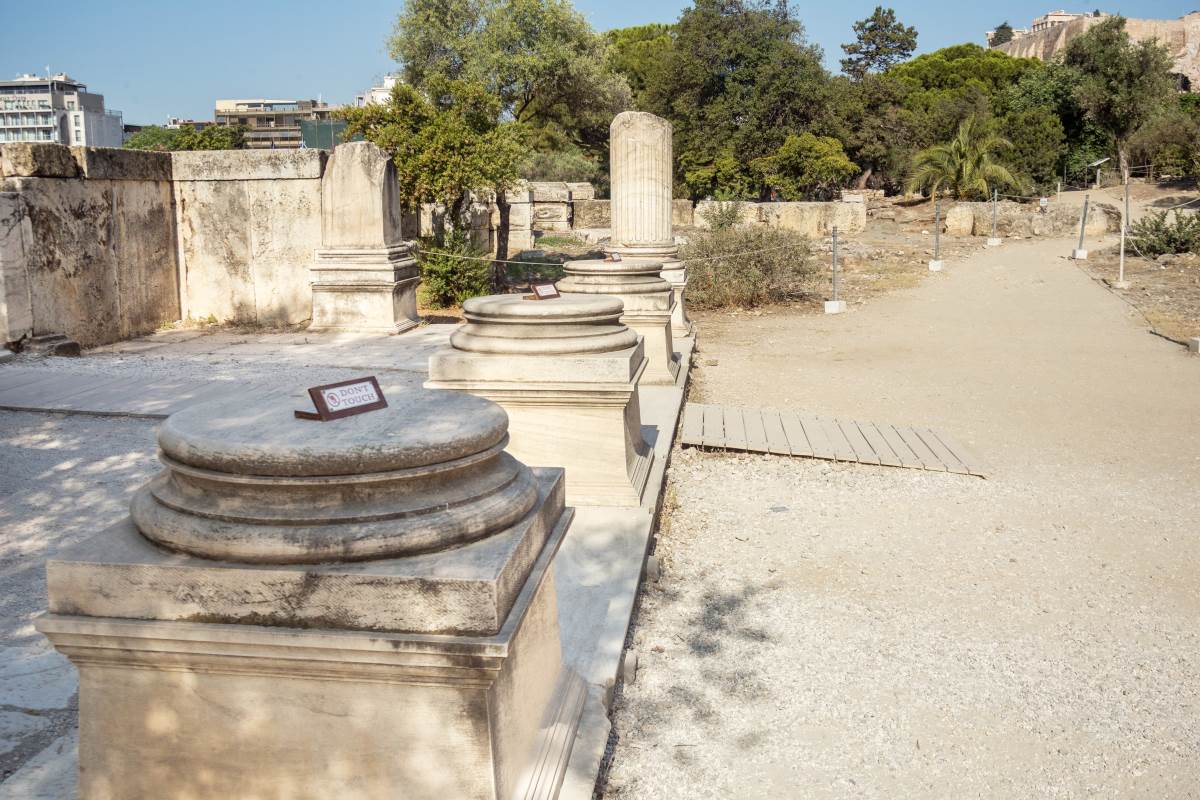
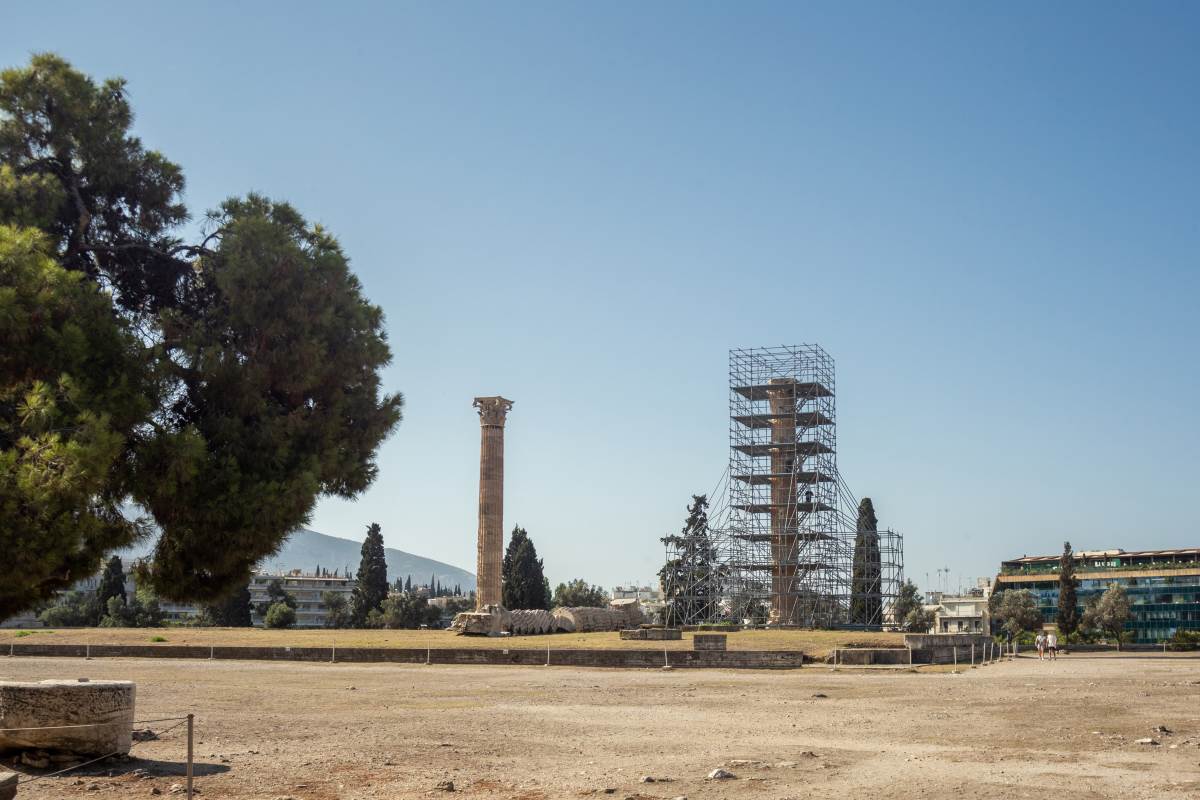
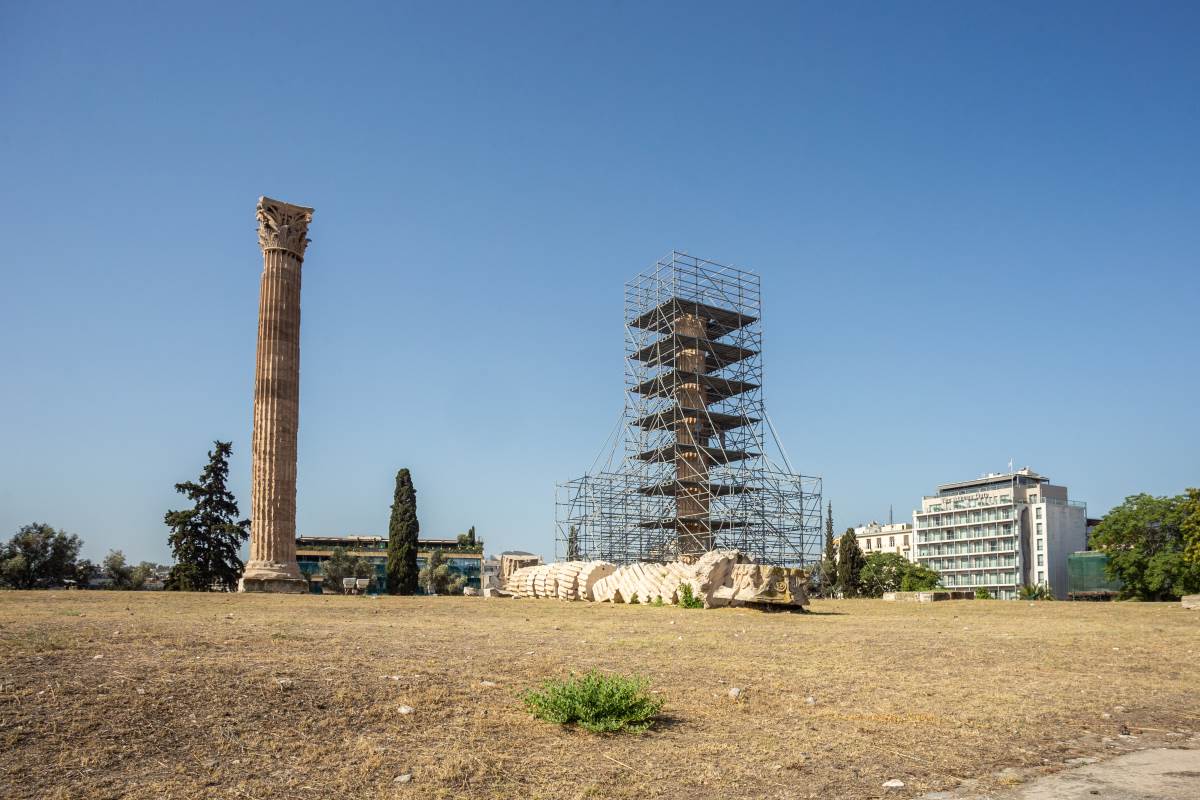
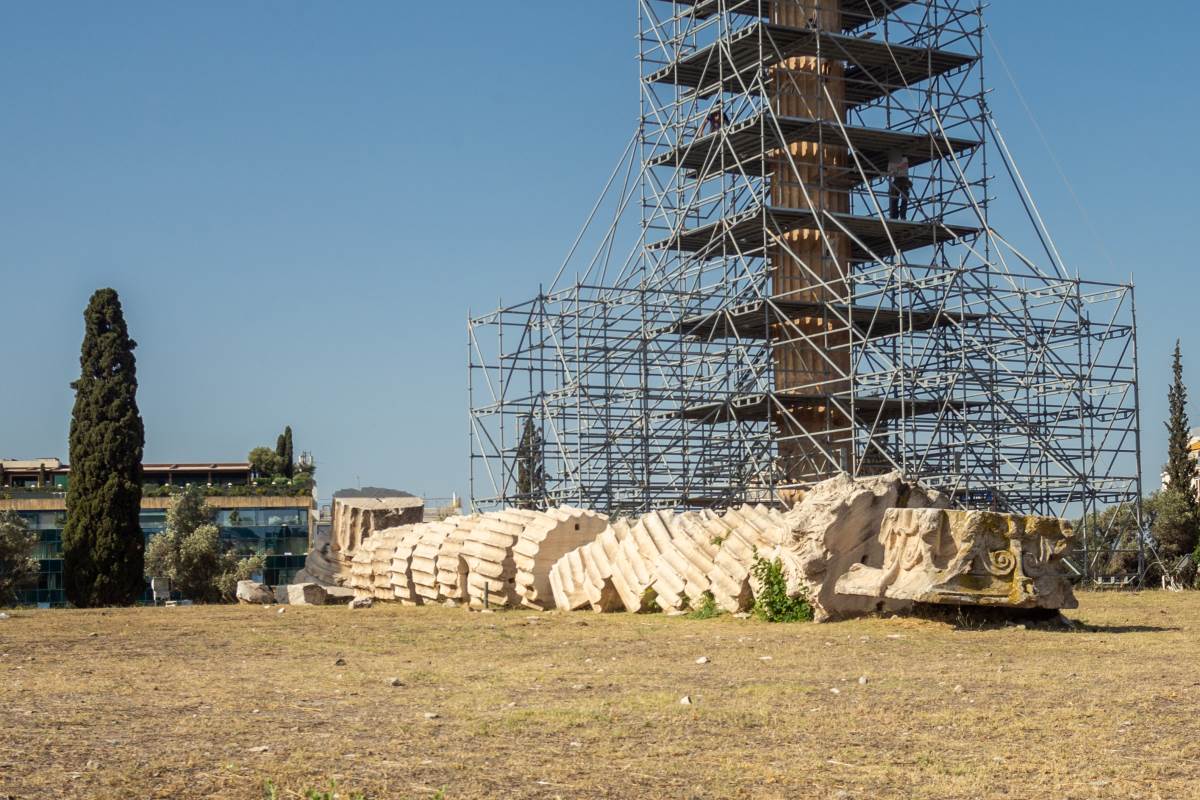
The Hadrianic temple, one of the largest in the ancient world, of Corinthian style, had a length of 110,35m, a width of 43,68m, two rows of 20 columns on the long sides and three rows of 8 columns on the narrow ones. It stood in the middle of a large rectangular enclosure with a propylon to the north. The cella housed two oversized gold and ivory statues of Zeus and the Emperor Hadrian, who were worshipped here as deities who were worshipped together at the same altar, while numerous statues and votive offerings decorated the enclosure.
During the Roman period, the temple became the largest temple in Greece and hosted one of the largest cult statues of the ancient world. Unfortunately, the temple’s glory did not last long because it was looted by an invasion of the Cherulians in the 3rd century AD. Since then it has fallen into disuse, never repaired and slowly turned into ruins.
The ruin began in the 5th century AD and continued in the following centuries due to natural causes or human intervention. In the centuries following the Roman period, the temple was looted to use parts of it as building materials for other structures in the city. In the SE area of the precinct, there was an open-air mosque during the Ottoman period and on the architrave of the columns in the SE corner of the church a medieval building, perhaps an observatory. Out of the 104 columns of the temple, 16 survived until 1852. One was demolished by a terrible storm that year.
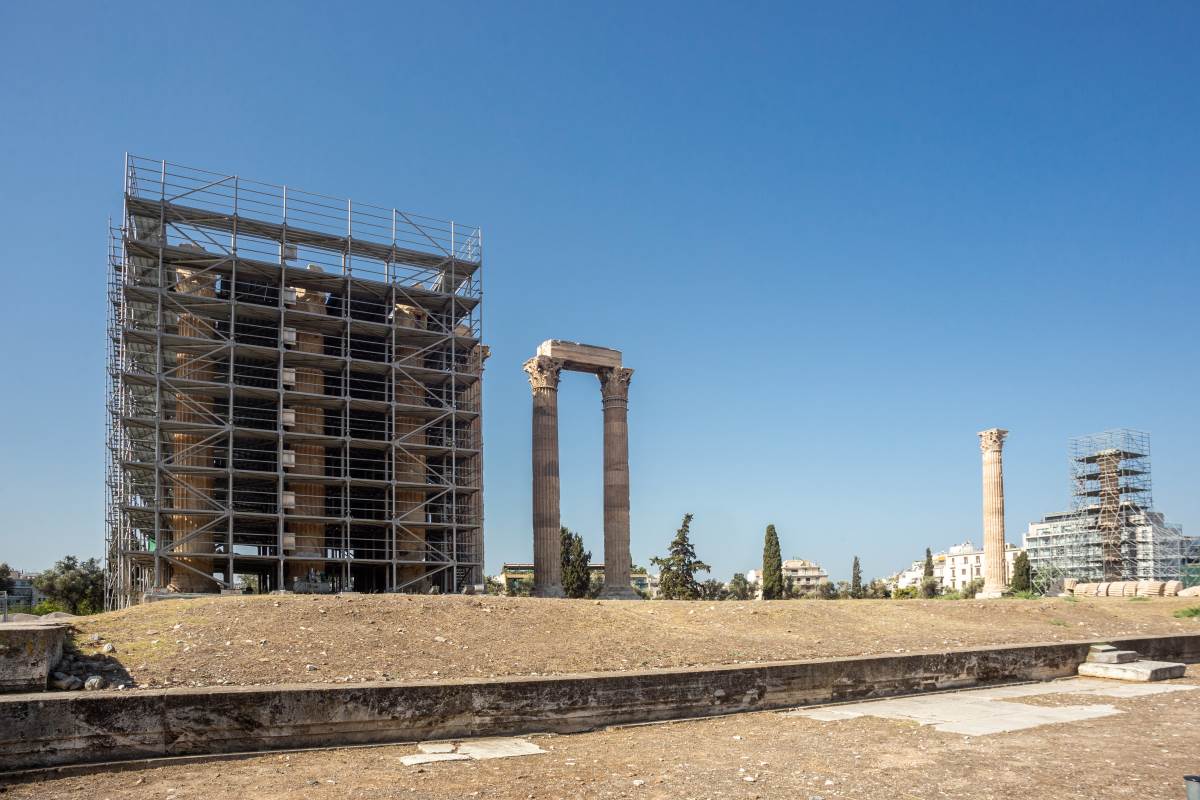
The temple was excavated for the first time in 1889-1896 by the archaeologist F. Penros of the British School of Athens (who also helped in the restoration of the Parthenon), in 1922 by the German archaeologist G. Welter and in the 1960s by Greek archaeologists led by Ioannis Travlos.
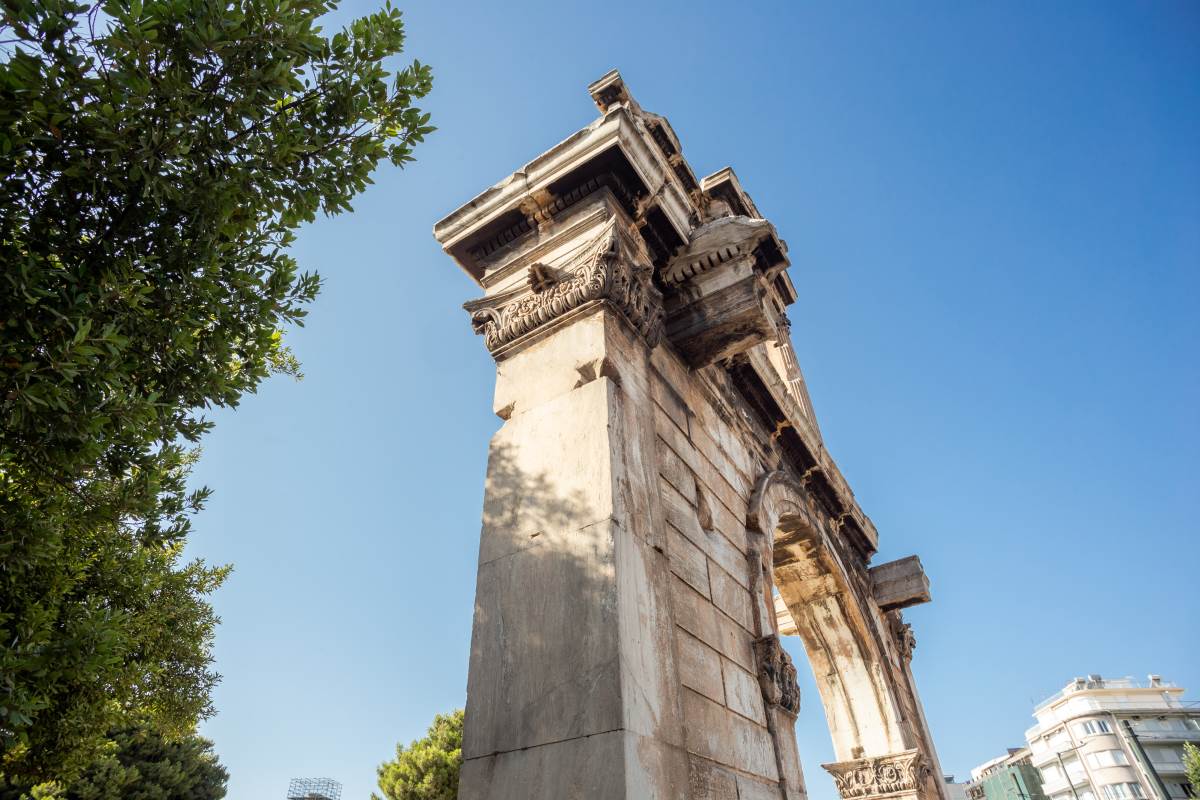
The Hadrian’s Gate, a Roman arch over the ancient road that ran from the city centre to the buildings on the eastern side of the city, including the Temple of Zeus, was made of the famous Pendelic marble, the material used for the Parthenon and most of Athens’ major monuments. It is said that this arch was built to celebrate the arrival of the Roman Emperor Hadrian and to honour him for the great benefits he had brought to the city, especially the construction of the temple of Olympian Zeus. It is 18 metres high, 13.5 metres long and 2.3 metres high and designed with absolute symmetry in every direction. It is believed that there were statues of Theseus and Hadrian placed on each side of the lower level of the arch based on the respective inscriptions.
There were two inscriptions, one on each side of the arch naming Theseus and Hadrian as the founders of the city. So on one side the inscription read: “This is Athens, the city of Theseus” and on the other side the inscription said: “This is the city of Hadrian, not Theseus”.
While it is clear that the arch commemorates Hadrian, it is not clear whether the inscriptions refer to the whole city or to two parts of it: the old ancient Greek and the new Roman. The original opinion that the arch was built as part of the wall to divide the city into the old and the new, has been shown to be incorrect according to subsequent excavations.
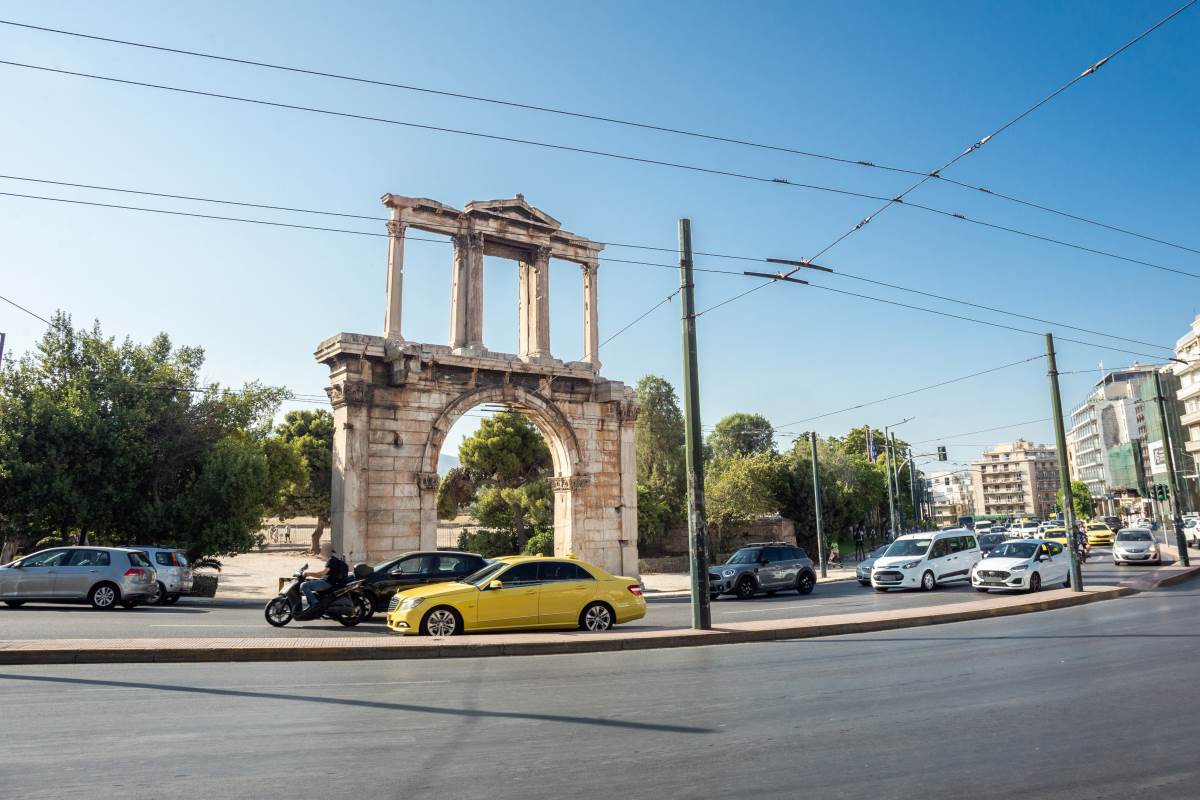
The maintenance and restoration works
In recent years, maintenance and structural restoration work has been carried out in the archaeological site, with priority being given to the restoration and rehabilitation of the columns.
The aim, at the beginning of the work, was to have restored one column, which has very significant damage, and to have proceeded substantially with the restoration of the 9 columns and the epistyles, by the end of 2023.
The work
The Project “Fixing and Maintenance of the Temple of Olympian Zeus in Athens”, is included in the Operational Program “Attica” 2014-2020, with a time horizon until the end of 2023 and with a total eligible public expenditure of 3.425.870,00€.
In the framework of the project, the following are foreseen, among others: implementation of structural restoration and maintenance works, limited excavation clearance and excavations, geotechnical study, seismic behaviour study, instrumental monitoring study, recording of scattered architectural members, testing of mechanical strength and analysis of the structural materials of the monument. In the framework of the same project, an archaeological survey is being carried out upstream of the western enclosure of the ancient sanctuary.
The site of the Olympieion and the Hadrian’s Gate is one of the most important cultural and archaeological sites not only in Athens but in Greece and continues to attract the interest of every visitor to the capital. A walk here is a walk through the history and culture of Athens. The temple, along with the ruins surrounding it, is an important historical relic managed by the Ephorate of Antiquities of the Ministry of Culture.
Entrance: €8
Photo – Video: Kostas Kapareliotis / travelstyle.gr
